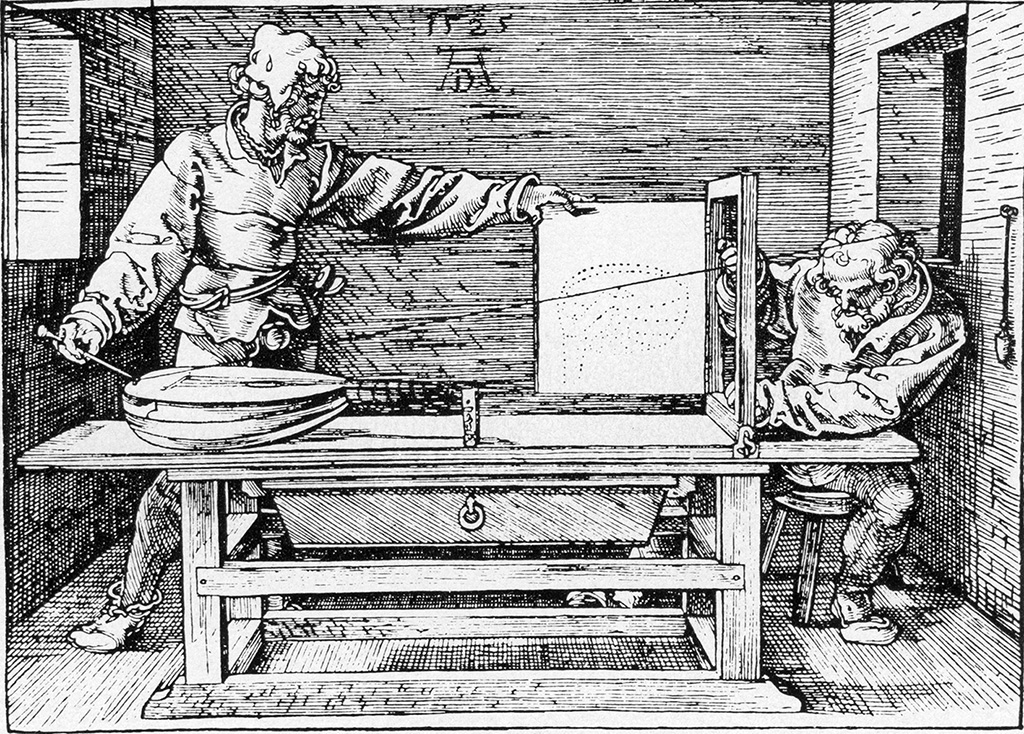In furtherance of my project publishing chapters from my books, we now come to a chapter on traditional artistic practices. Its title is “The Renaissance and the Academic Method”. To understand how it fits into the structure of “Drawing with Both Sides of the Brain”, please go to the POSTSCRIPT below. To read the chapter just click on the link immediately below:
Chapter 2, Traditional artistic practices
Some illustrations of traditional artistic practices
As you will see the chapter is richly illustrated: The four images below show either the traditional artistic practices in action or their fruits. The first two give a foretaste of the use of essentially mechanical devices, while the second two illustrate the advantage of a having a comprehensive knowledge of anatomy and linear perspective respectively.




POSTSCRIPT
This chapter is from “Drawing on Both Sides of the Brain”, which is divided into two BOOKS.
- BOOK ONE “Drawing with Feeling” and
- BOOK TWO, “Drawing with Knowledge“.
Each book is divided into several parts. Thus BOOK ONE, to which contains the chapter to which this post is devoted, is divided into three parts:
- Part 1, “Objectives“.
- Part 2, “Established practices“.
- Part 3 “The new drawing lesson“.
The Chapter found in this post is BOOK ONE, Part 2, Chapter 2. It follows the sole chapter from Part 1 which has already been posted and can be obtained by clicking on its title below:
In the coming weeks and months other chapters from BOOK ONE, Part 2 will be posted as .PDF files.
- Chapter 3: The arrival of Modernist teaching methods,
- Chapter 4: The sketch as a link between old ways and new.
- Chapter 5: Negative shapes.
- Chapter 6: Contour drawing.
- Chapter 7: Photographs.
- Chapter 8: Movement, speed and memory.
Following these chapters, comes PAR T 3, which can be described as “the hub of the book”. It consists of three chapters devoted to my “feeling based drawing lesson“. These describe the drawing process in considerable depth, before embarking on my drawing lesson with its host of innovatory suggestions.
Also, I will be posting other chapters and extracts on the theme of drawing. These are from BOOK 2, “Drawing with Knowledge” and they will provide a raft of new perspectives on linear perspective and human anatomy.
Other Posts that publish chapters from “Drawing on Both Sides of the Brain”.
- Chapter 1: Accuracy versus expression
- Chapter 2: Traditional artistic practices:
- Chapter 3: Modernist ideas that fed into new teaching methods
- Chapter 4: the sketch and explaining the feel-system.
- Chapter 6: Negative shapes
- Chapter 6: Contour drawing
- Chapter 7: Copying Photographs
- Chapter 8: Fast drawing, learning and expression
Other drawing-related Posts
Full list of Posts in all categories
merci pour toutes ces connaissances partagées avec autant de patiente et de générosité. C’est un “régal”
Fascinating to learn about the wide range of practices used to achieve accuracy. Imagine what they would think of contemporary techniques!
Another more passionate than talented responder, eager to absorb these posts and to practice what they preach…
New perspectives on perspective…linear and philosophical.
Thanks. Very helpful.
Very Cool!
Hello, today re-read this chapter, following several days of wrestling with seeing as accurately as I can, and then drawing as accurately as I can. My efforts seem hopeless. BUT! This chapter reminded me that the practical tasks of Seeing, followed by the effort of Capturing accurately, is a deeply, eternal part of the visual search for mastery. So, my earnest small efforts track with the required work of thousands and thousands of visual artists, regardless of the level of their gifts. In other words, the work is the work, no matter who’s holding the pencil!